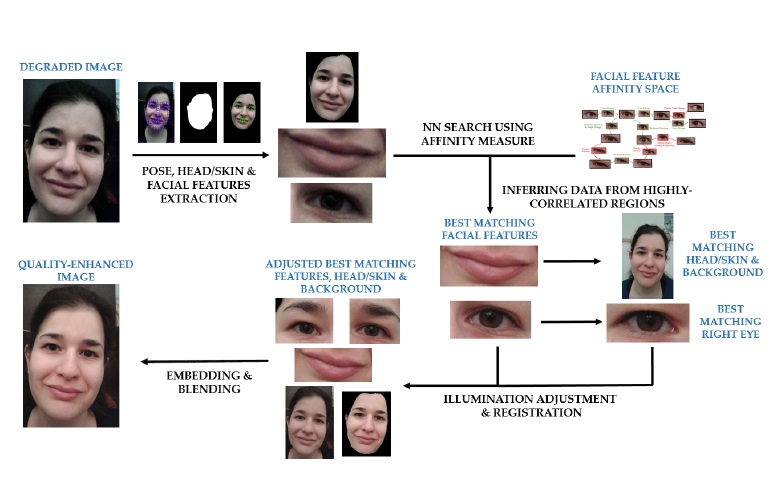- ALL COMPUTER, ELECTRONICS AND MECHANICAL COURSES AVAILABLE…. PROJECT GUIDANCE SINCE 2004. FOR FURTHER DETAILS CALL 9443117328


Projects > ELECTRONICS > 2017 > IEEE > DIGITAL IMAGE PROCESSING
We propose a new way to solve a very general blind inverse problem of multiple simultaneous degradations such as blur, resolution reduction, noise and contrast changes, without explicitly estimating the degradation. The proposed concept is based on combining semantic non-rigid patches, problem-specific high quality prior data and non-rigid registration tools. The method is demonstrated on the problem of cellular photography quality enhancement of dark facial images for different identities, expressions and poses, and is compared to state-of-the-art denoising, deblurring, super-resolution and color correction methods.
Noise Removal Algorithms, K-SVD Algorithm.
In this work we propose a new way to solve a general and difficult blind inverse problem, including multiple degradations such as noise, resolution reduction, contrast and color changes. Personal priors are used to enhance the quality of facial images of a particular person. We obtain new data-driven facial features spaces, based on only tens of HQ, same-identity, same-pose examples, differing in facial expression; and define a new affinity measure to match them to given LQ queries. For two key facial features and for different head poses, we construct HQ, identity-specific affinity spaces, representing various†principal modes†of the feature (different structures and expressions). We define a new affinity measure for image matching under non-rigid variations, which derives from the distance between images, in the sense of the non-rigid transformation required to register them. This measure corresponds to how natural, real-world interpolated images appear to a human observer, or their†visual validityâ€. The registration can thus interpolate real-world looking images, that can expand the affinity space. It also provides a useful tool for fine registration of non-rigid facial features. The measure’s robustness to quality degradation and nonrigid variations enable to accurately match a query feature to the most similar example from the suitable affinity space. HQ information selected is then registered and embedded into the LQ image to obtain a HQ facial image.
BLOCK DIAGRAM
